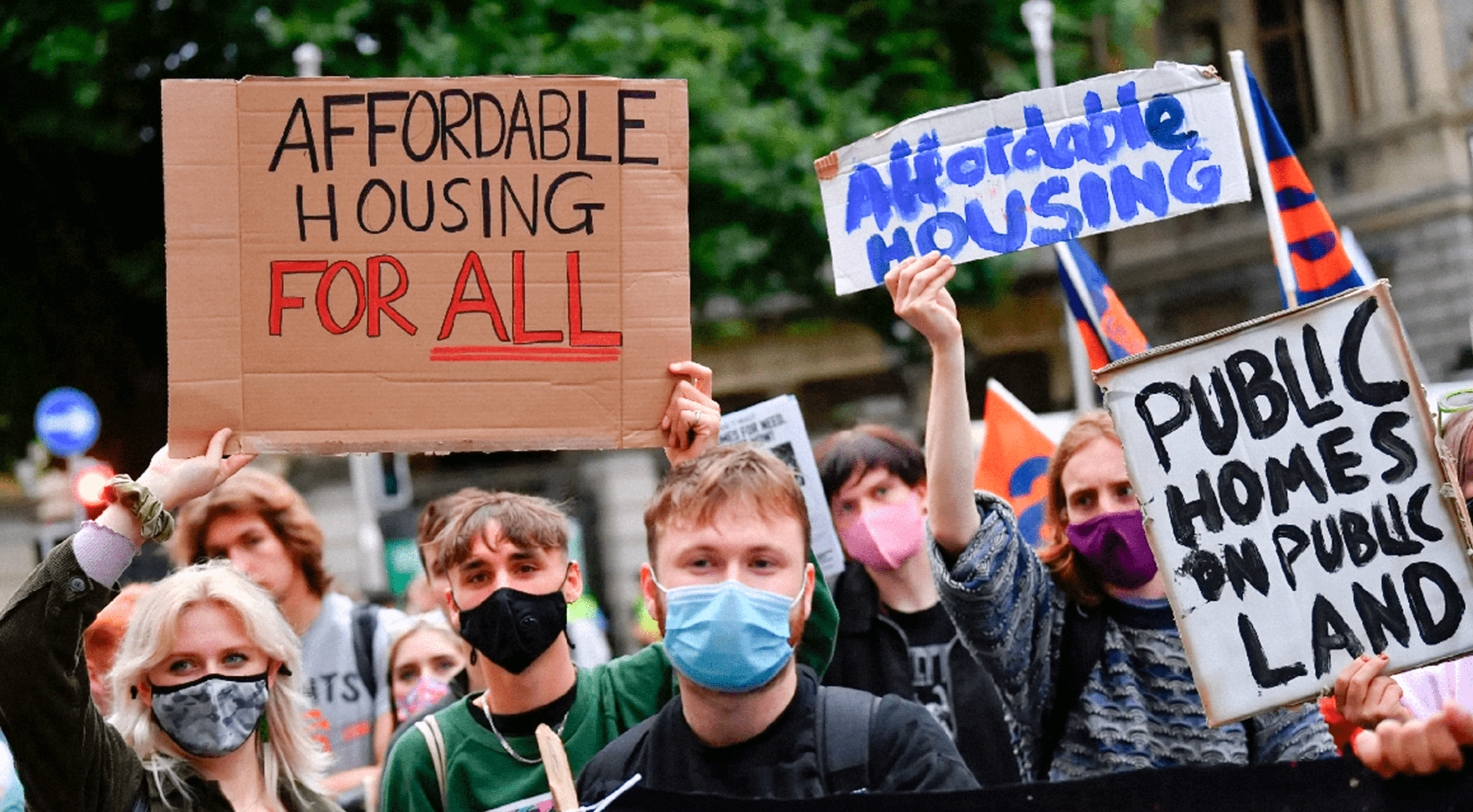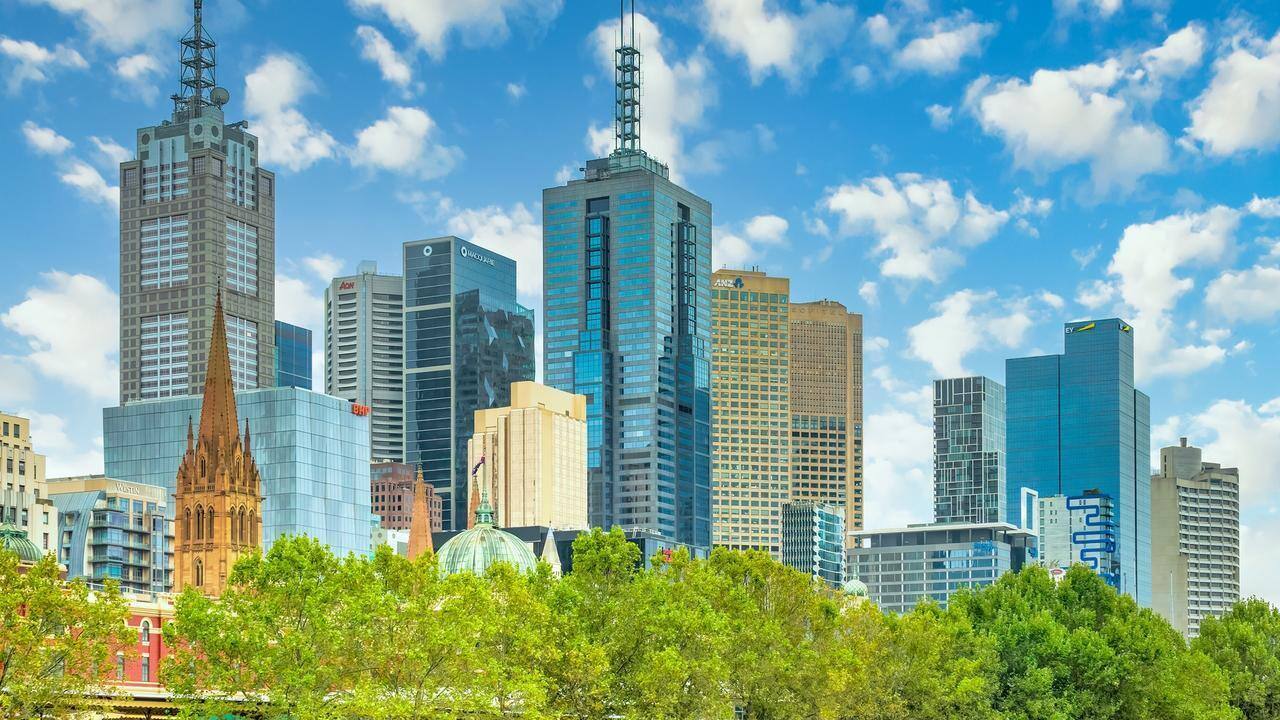Features > Property News & Insights > Housing Trends
Persistent housing shortage drives Australian property to new record highs

Image from The Irish Sun/CLODAGH KILCOYNE
KEY POINTS
- Australian residential property reached new national value and price highs in August 2024, with Perth, Adelaide and Brisbane leading the way
- CoreLogic and REA Group’s PropTrack say growth is slowing, but both data houses expect a continuing situation where demand for housing outstrips supply, which will keep upward pressure on prices
- ABS data shows dwelling approvals in July jumped 10.4% - however, this followed an unexpected fall the previous month and is coming off a low base
- Separate data compiled by AMP shows a continuing chronic undersupply of homes compared to the underlying demand for housing
New data from two analytics firms shows that Australian residential property reached new price and value records in August 2024, although both PropTrack and CoreLogic say the pace of growth may be slowing.
However, both data point to the strong performance of cheaper market segments, with units and more affordable areas of capital cities performing particularly strongly.
Separate data from the Australian Bureau of Statistics and research by AMP Capital Markets again demonstrates the underlying imbalance between supply and demand for Australian housing, which is helping to keep upward pressure on values and prices at a national level.
CoreLogic August 2024 Home Value Index:
CoreLogic says national dwelling values rose 0.5% in August, marking the 19th straight month of value increases in Australian residential property.
However, growth across Australia’s cities remains diverse, with CoreLogic reporting strong monthly gains of 2% or roughly $15,100 in Perth, followed by robust rises in Adelaide (1.4%) and Brisbane (1.1%).
Sydney recorded a small uptick of 0.3% to reach a new record dwelling value of $1,180,463, while four capital cities saw declining values in August.
Canberra (-0.4%), Melbourne (-0.2%), Darwin (-0.2%), and Hobart (-0.1%) all recorded small decreases in their median dwelling values.
According to CoreLogic’s calculations, Adelaide ($790,800) and Perth ($785,250) have now overtaken Melbourne ($776,004), meaning the Victorian capital now has the third lowest median of all the capitals.
Interestingly, unit values recorded a stronger performance than houses in six of the eight capitals, as did the performance of more affordable areas of capital cities, such as the Canterbury area in Sydney (up 13.3% in the past year), Kwinana in Perth (up 31.4%), and the Springwood – Kingston market in Brisbane (up 25.5%).
“This suggests growing buyer interest in lower-priced segments, supporting values in these areas,” says CoreLogic’s Head of Research, Eliza Owen.
“The lower quartile of the combined capital city market, which makes up the most affordable 25% of dwellings, rose 2.7% in the three months to August, compared to a 0.3% lift across the upper quartile,” she says.
Overall, Ms Owen notes that while a traditional slowdown may have contributed to weaker national value growth during the winter months, affordability constraints (continuing high interest rates, a cost-of-living crisis and a per capita recession) are the key factors behind the broader slowdown.
PropTrack Home Price Index August 2024:
REA Group says its PropTrack Home Price Index for August shows national home prices have recorded 20 consecutive months of growth, reaching a new national median of $790,000 in August, an increase of 0.22% on the previous month.
Like CoreLogic, PropTrack notes that price “performance differs significantly across the capitals, reflecting a multi-speed market,” with Perth (+0.79%), Hobart (+0.63%) and Adelaide (+0.45%) recording the strongest growth in August.
“Home price growth slowed over the winter months in Sydney, yet prices are still up 0.32%”, the PropTrack team notes, estimating the median dwelling in the New South Wales capital is now $1,095,000.
Melbourne home prices eased 0.18%, the fifth straight month of declines, according to PropTrack, with prices down 1.98% in that period.
On the other hand, Perth, Adelaide and Brisbane keep steaming ahead, with Perth prices up 23.24% annually, followed by Adelaide (+15.12%) and Brisbane (+13.95%).
“Tight supply and strong demand in Perth and Adelaide will see sellers enter the spring selling season with a strong advantage,” PropTrack’s Senior Economist Eleanor Creagh says.
“Although the number of homes hitting the market this year has lifted, strong population growth, tight rental markets and home equity gains are bolstering demand.
“Meanwhile, building activity remains challenged, exacerbating a chronic shortage of housing,” she notes.
ABS Dwelling Approvals:
Underlining Eleanor Creagh’s point are the latest dwelling approval figures from the Australian Bureau of Statistics.
While the numbers for July show total national dwelling approvals jumped 10.4% in seasonally adjusted terms to 14,797, this comes off the back of a 6.4% decline the previous month.
So, according to the ABS, in the last year, just 162,232 new homes were approved.
This is nearly 80,000 homes a year below the number of homes that need to be built each year in Australia over the next 5 years to have any hope of meeting the nationally-agreed target of building 1.2 million well-located and affordable homes by mid 2029.
When you dig further into the latest monthly figures they show that detached house approvals rose by just 0.6% to 9,252.
“Private attached dwellings” (that’s the ABS category which takes in apartments and townhouses) jumped 32.1%.
However, housing analyst Maree Kilroy from Oxford Economics describes the 5,234 approvals in that sector as “still poor”.
“This jump is not, however, a concrete indication of a turning point for apartment construction,” she says.
“Outside of some niche markets, the run-up in interest rates continues to weigh on apartment presales.
“For build-to-sell developers, delays, higher debt costs, and increased build tender prices are causing feasibilities to not stack up,” she says, adding that “this difficulty is showing through in a subdued volume of project launches.”
It’s these high-density apartment projects located in the major capitals that Australia desperately needs, and it's exactly the sort of housing that state and federal governments say they want to see more of.
The bottom line is that nowhere near enough of these projects are being taken to councils to be approved because developers simply can’t get them to stack up financially.
AMP:
Recently, AMP’s Chief Economist, Dr Shane Oliver, did a deep dive into some of the data surrounding the state of Australian housing to debunk a number of spurious claims that the property market was on the verge of a spectacular crash.
What he actually found is stark.
“The property market is not just a speculative bubble fuelled by easy money and low interest rates,” he observed.
“Sure, low rates allowed us to pay each other more for homes, but the key factor keeping them elevated relative to incomes has been that the supply of new dwellings has not kept up with demand due to strong population growth since the mid-2000s and more recently with record population growth resulting in an accumulated shortfall of around 200,000 dwellings at least but possibly as high as 300,000 if the reduction in average household size that occurred through the pandemic is allowed for.
“This partly explains why property prices have not collapsed despite the threefold rise in mortgage rates since May 2022,” he concluded.
Stay Up to Date
with the Latest Australian Property News, Insights & Education.




.png?width=292&height=292&name=Copy%20Link%20(1).png)
 SIGN UP FOR FREE NEWSLETTER
SIGN UP FOR FREE NEWSLETTER








.jpg?width=1920&height=1080&name=Warning%2c%20You%20Might%20Be%20Facing%20Higher%20Taxes%20Soon%20(1).jpg)





.png?width=1920&height=1080&name=Rate%20Drops%20Signal%20BIGGEST%20Property%20Boom%20in%20DECADES%20(1).png)

.jpg?width=1920&height=1080&name=Labor%20vs%20Liberal%20These%20Housing%20Policies%20Could%20Change%20the%20Property%20Market%20Forever%20(1).jpg)
.jpg?width=1920&height=1080&name=QLD%20Slashes%20Stamp%20Duty%20Big%20News%20for%20Investors%20%26%20Home%20Buyers%20(1).jpg)
.jpg?width=1920&height=1080&name=Trump%20Just%20Slapped%20Tariffs%20%E2%80%93%20Here%E2%80%99s%20What%20It%20Means%20for%20Australia%20(1).jpg)
.jpg?width=1920&height=1080&name=Federal%20Budget%202025%20More%20Debt%2c%20No%20Housing%20%E2%80%93%20Here%E2%80%99s%20What%20You%20Need%20to%20Know%20(1).jpg)
.jpg?width=1920&height=1080&name=Australias%20Housing%20Crisis%20is%20about%20to%20get%20MUCH%20Worse%20(New%20Data%20Warns).jpg)
%20(1).jpg?width=1920&height=1080&name=Australias%20RENTAL%20CRISIS%20Hits%20ROCK%20BOTTOM!%20(2025%20Update)%20(1).jpg)
%20(1).png?width=1920&height=1080&name=Is%20Adelaide%20Still%20a%20Good%20Property%20Investment%20(2025%20UPDATE)%20(1).png)
.jpg?width=1920&height=1080&name=RBA%20Shocks%20with%20Rate%20Cuts!%20What%E2%80%99s%20Next%20for%20Property%20Investors%20(1).jpg)
%20(1).jpg?width=1920&height=1080&name=I%20Predict%20The%20Feb%20Rate%20Cut%20(My%20Price%20Growth%20Prediction)%20(1).jpg)
.png?width=1920&height=1080&name=Why%20Property%20Prices%20Will%20Rise%20in%202025%20Market%20Predictions%20(1).png)
.jpg?width=1920&height=1080&name=Why%20Investors%20Are%20Choosing%20Apartments%20Over%20Houses%202%20(1).jpg)
.jpg?width=1920&height=1080&name=Why%20Rate%20Cuts%20Will%20Trigger%20A%20Property%20Boom%20(1).jpg)
.jpg?width=1920&height=1080&name=Retire%20On%202Million%20With%20One%20Property%20(Using%20SMSF).jpg)
.jpg?width=1920&height=1080&name=4%20Reasons%20Why%20You%20Should%20Invest%20in%20Melbourne%20Now%20(1).jpg)
%20(1).jpg?width=1920&height=1080&name=Old%20Property%20vs%20New%20Property%20(Facts%20and%20Figures%20Revealed)%20(1).jpg)
%20(1).jpg?width=1920&height=1080&name=Will%20The%20New%20QLD%20Govt%20Create%20a%20Property%20Boom%20or%20Bust%20(My%20Prediction)%20(1).jpg)
%20Scott%20Kuru%20(1).jpg?width=1920&height=1080&name=Inflation%20Hits%20Three-Year%20Low%20(Will%20RBA%20Cut%20Rates%20Soon)%20Scott%20Kuru%20(1).jpg)
.jpg?width=1920&height=1080&name=How%20to%20Buy%20Investment%20Property%20Through%20SMSF_%20The%20Ultimate%20Guide%20(1).jpg)
.jpg?width=1920&height=1080&name=Victoria%20Slashes%20Stamp%20Duty%20Melbourne%20Set%20to%20Boom%20Scott%20Kuru%20(1).jpg)
.png?width=1571&height=861&name=Are%20Foreign%20Buyers%20Really%20Driving%20Up%20Australian%20Property%20Prices%20(1).png)
.jpg?width=1920&height=1080&name=The%20Single%20Factor%20That%20Predicts%20Property%20Growth%20Regions%20(1).jpg)
%20Scott%20Kuru%20(1).jpg?width=1920&height=1080&name=My%20Prediction%20On%20Rates%20%26%20Negative%20Gearing%20(Market%20Crash)%20Scott%20Kuru%20(1).jpg)

-1.png?width=1920&height=1080&name=Major%20Banks%20Cut%20Rates%20Will%20RBA%20Follow%20Suit%20(Sept%20Rate%20Update)-1.png)
%20Scott%20Kuru-1.png?width=1920&height=1080&name=Rate%20Cut%20Coming%20What%20New%20Zealands%20Move%20Means%20for%20Australia%20(Sept%20Prediction)%20Scott%20Kuru-1.png)
%20(1).jpg?width=1920&height=1080&name=Buy%20when%20the%20interest%20rates%20are%20high!%20(Why%20you%20must%20buy%20now!)%20(1).jpg)
.jpg?width=1920&height=1080&name=Carms_Revised%20Taxes%20Due%20Aug%209%20YT%20Thumbnail02%20(1).jpg)
.jpg?width=1920&height=1080&name=Carms_Too%20Little%20Too%20Late%20Aug%207%20YT%20Thumbnail01%20(1).jpg)









.jpg?width=1920&height=1080&name=Carms_Rate%20Drop%20In%20July%20Jun%2010%20YT%20Thumbnail02%20(1).jpg)
.jpg?width=1920&height=1080&name=Carms_Own%20a%20Property%20V6%20Jun%205_YT%20Thumbnail%20(1).jpg)









.png?width=1920&height=1080&name=Artboard%201%20(3).png)






.jpg?width=1920&height=1080&name=YT%20thumbnail%20%20(1).jpg)

